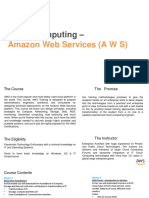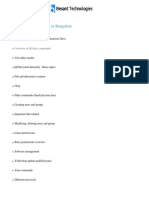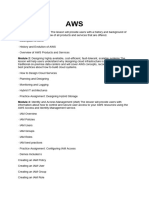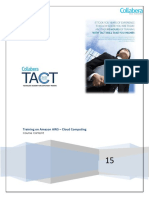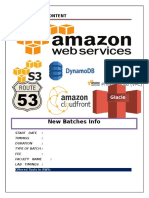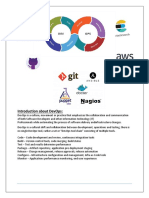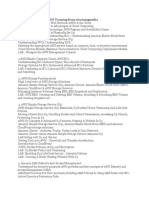0% found this document useful (0 votes)
266 views10 pagesCloud & Devops
The document provides an overview of topics related to DevOps, cloud computing, and AWS. It outlines concepts like DevOps principles and tools, cloud models (IaaS, PaaS, SaaS), virtualization technologies like Docker and Kubernetes, Linux administration, programming languages like Java and frameworks like Maven, configuration management tools like Ansible, cloud platforms like AWS, and DevOps related services in AWS. The document aims to introduce foundational concepts and provide hands-on exercises for tools and services commonly used for DevOps in cloud environments like AWS.
Uploaded by
manimarantrkCopyright
© © All Rights Reserved
We take content rights seriously. If you suspect this is your content, claim it here.
Available Formats
Download as DOCX, PDF, TXT or read online on Scribd
0% found this document useful (0 votes)
266 views10 pagesCloud & Devops
The document provides an overview of topics related to DevOps, cloud computing, and AWS. It outlines concepts like DevOps principles and tools, cloud models (IaaS, PaaS, SaaS), virtualization technologies like Docker and Kubernetes, Linux administration, programming languages like Java and frameworks like Maven, configuration management tools like Ansible, cloud platforms like AWS, and DevOps related services in AWS. The document aims to introduce foundational concepts and provide hands-on exercises for tools and services commonly used for DevOps in cloud environments like AWS.
Uploaded by
manimarantrkCopyright
© © All Rights Reserved
We take content rights seriously. If you suspect this is your content, claim it here.
Available Formats
Download as DOCX, PDF, TXT or read online on Scribd
/ 10




















